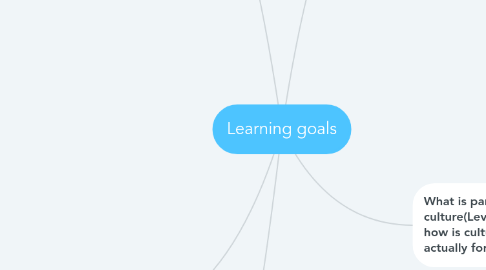
1. What is the PESTEL analysis?
1.1. Economic
1.1.1. Interest and inflation rates
1.1.2. Consumer confidence
1.1.3. The business cycle
1.1.4. Economic growth prospects
1.1.5. Unemployment rates
1.1.6. Disposable incomes
1.1.7. Labour costs
1.2. Technological
1.2.1. Housing stock
1.2.2. Scientific discoveries
1.2.3. Communications technology
1.2.4. Production technology
1.2.5. Infrastructure (e.g. power and transport
1.3. Legal
1.3.1. Employment law
1.3.2. Company law
1.3.3. Business regulation
1.4. Environmental
1.4.1. Climate change
1.4.2. Water resources
1.4.3. Energy supplies
1.5. Socio-cultural
1.5.1. Demographics
1.5.1.1. population and household numbers
1.5.2. Values in society
1.5.3. Lifestyles
1.5.3.1. attitudes to work and leisure
1.5.4. Consumer preferences
1.5.5. Levels of education
1.6. Political
1.6.1. Taxation policy
1.6.2. Privatisation/deregulation policies
1.6.3. Environmental legislation
1.6.4. Health & safety regulations
1.6.5. Public expenditure controls
1.6.6. European Union directives
1.6.7. Government stability
2. Porter's five forces model
2.1. Five forces
2.1.1. Threat of new entrants
2.1.2. Intensity od rivalry among competitors
2.1.3. Power of buyers (customers)
2.1.4. Bargaining power of suppliers
2.1.5. Threat of substitutes
2.2. technique for identifying and listing aspects
2.3. relevant for the profitability of an organization
3. Theorie of Hofstede and Whitley
3.1. Hofstede
3.1.1. collective programming of people's minds
3.1.1.1. influences who they react to events
3.1.2. identified 5 dimensions of culture
3.1.2.1. Power distance
3.1.2.1.1. hierarchy unfairness
3.1.2.2. Uncertainty avoidance
3.1.2.2.1. unexpected and unknown situations
3.1.2.3. Individualism/Collectivism
3.1.2.3.1. Since you're born you have to take care only of yourself and your direct family
3.1.2.3.2. Being integrated into strong groups where you earn protection for your loyalty
3.1.2.4. Masculinity/Feminity
3.1.2.4.1. Clear distinction of gender roles, emotional gender roles overlap
3.1.2.5. Long-term and short-term orientation
3.1.2.5.1. LTO : worrying about the future
3.1.2.5.2. STO: worrying about the past and the present
3.1.3. focuses one differences in a business in attitude of individuals
3.2. Whitley
3.2.1. establishes links between ...
3.2.1.1. macro-institutions,,innovation-systems and modes of organizations
3.2.2. 4 dimensions of business systems
3.2.2.1. Power of State
3.2.2.2. Financial system
3.2.2.3. Education and labour system
3.2.2.4. cultural systems
3.2.3. focuses on differences in management based on the environment
4. What is culture?
4.1. Visible
4.1.1. Clothing
4.1.2. Skin colour
4.1.3. Behaviour
4.1.4. Language
4.1.5. Economic status
4.2. Spiritual
4.2.1. Behaviour
4.2.2. Rituals & ceremonies
4.2.3. Religion
4.2.4. Habits
4.2.5. Character
5. What is part of the culture(Levels) and how is culture actually formed?
5.1. visible level
5.1.1. Architecture
5.1.2. Technology and equipment
5.1.3. Style
5.1.4. Rituals and ceremonies
5.1.5. Courses
5.2. Beliefs and values
5.2.1. "Quality pays"
5.2.2. "We should stick to our core business"
5.2.3. "Take personal responsibility"
5.2.4. Work as a team
5.2.5. Challenge a proposal-whoever made it
5.3. Basic underlying assumptions
5.3.1. "We need to satisfy customers to survive as a business"
5.3.2. "Our business is to help people with X problem live better despite that"
5.3.3. "People can make mistakes, as long as they learn from them"
5.3.4. "We employ highly motivated and competent adults"
5.3.5. "Financial markets worry about the short term:we are here for the long term"

